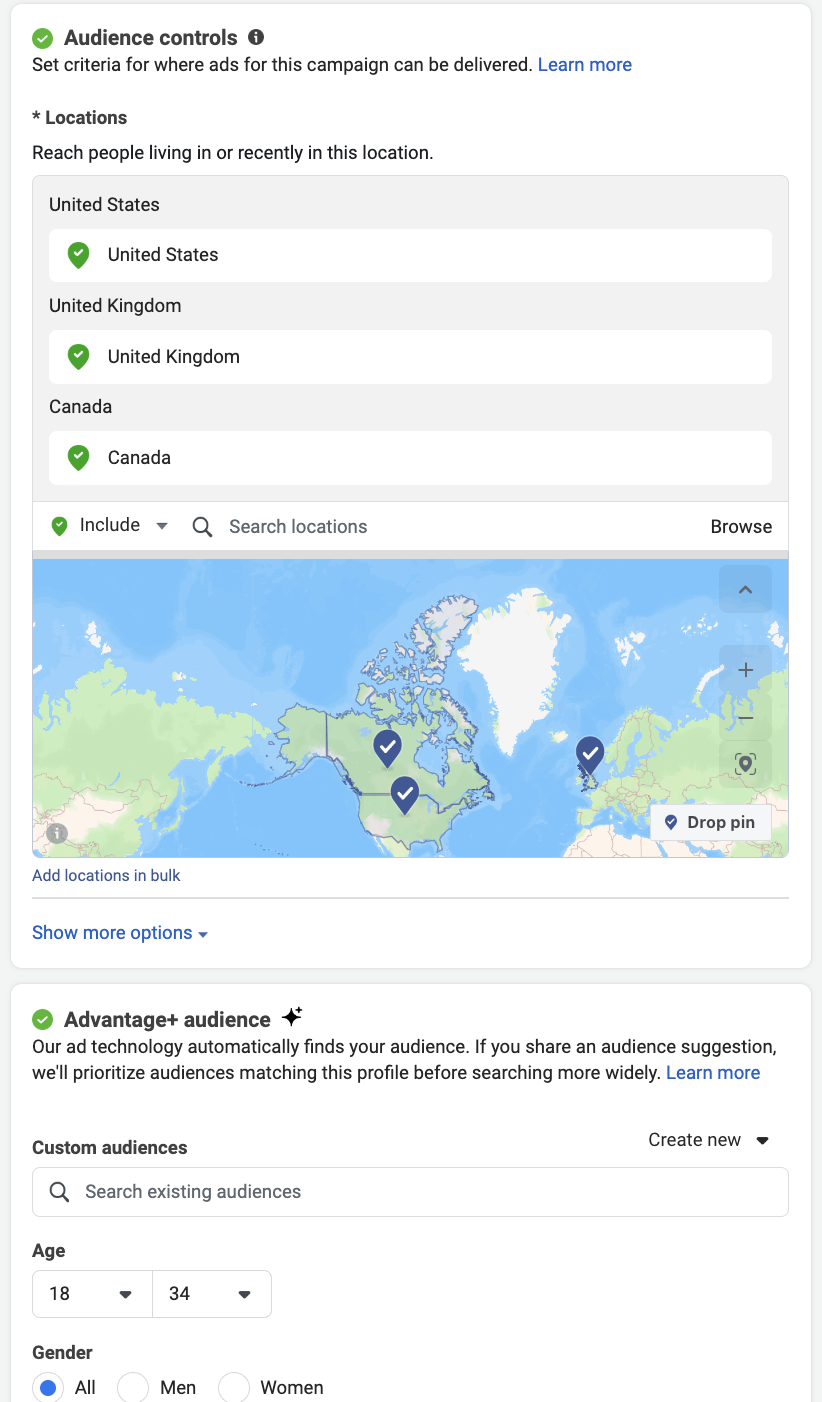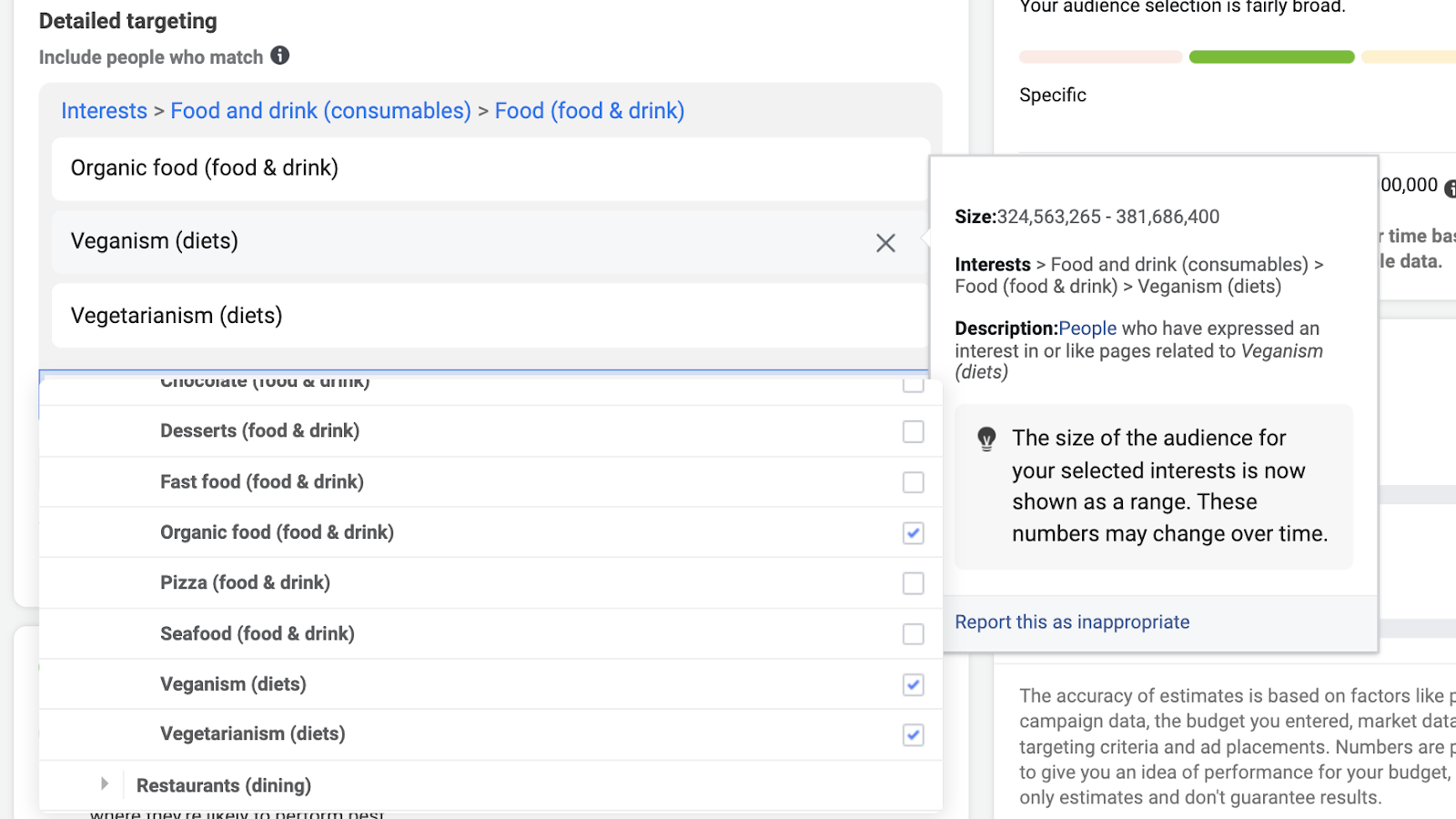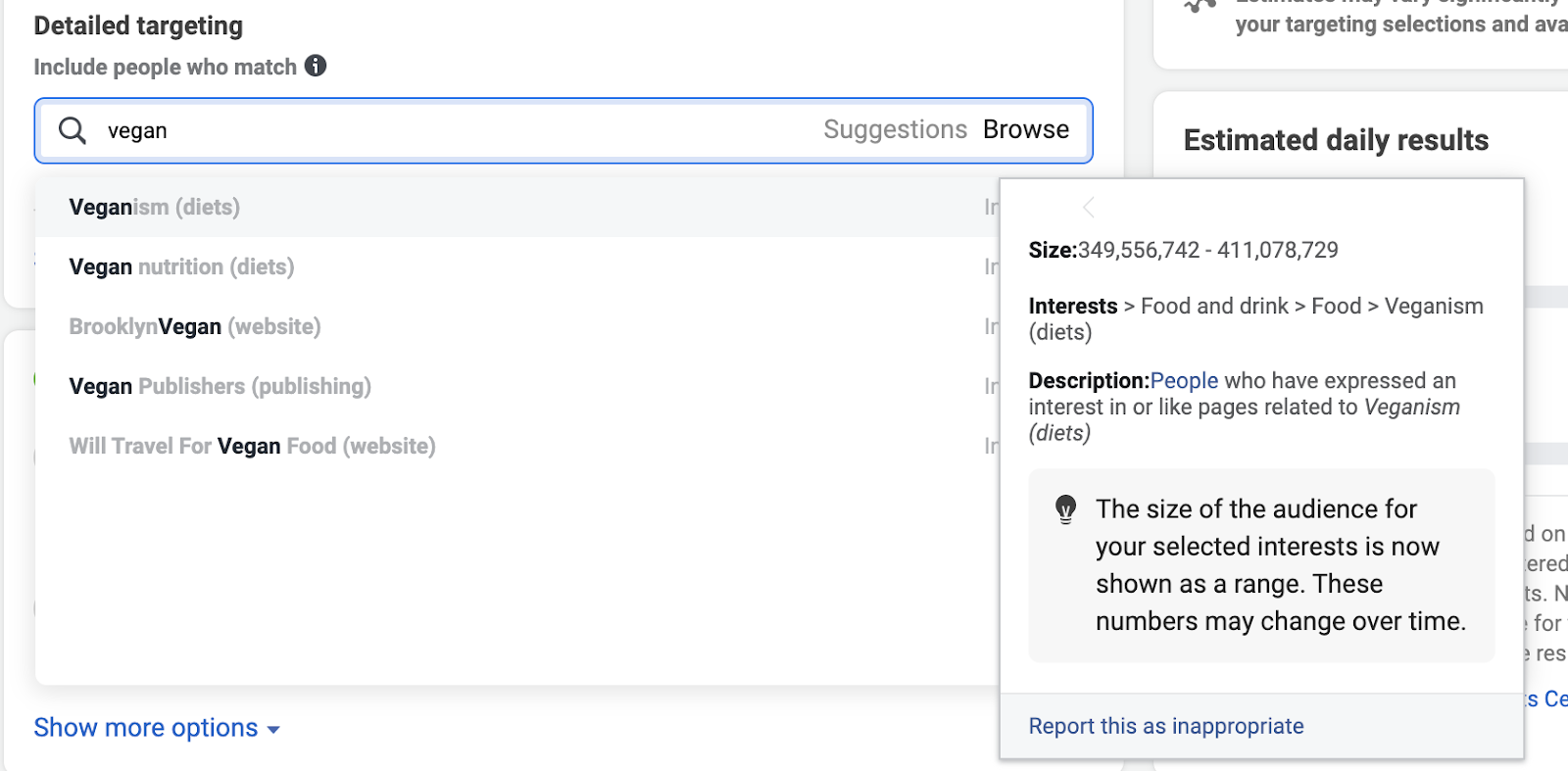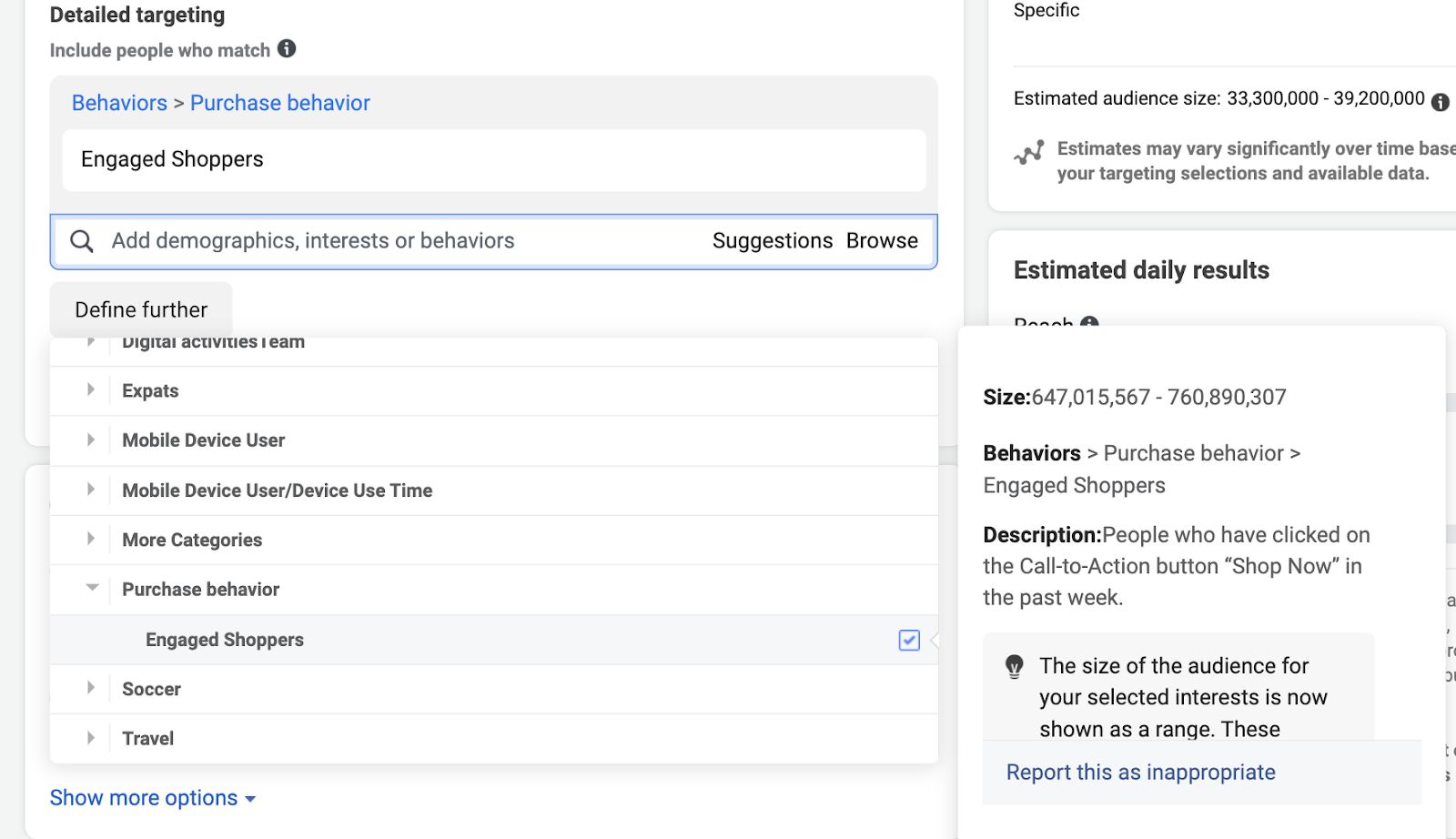76% of Ecommerce stores lose money on Facebook ads according to a study analyzed by Glew.
Stores had a negative 20.7% return on ad spend. Meaning, the revenue earned only recouped 79.3% of ad spend.
When you can’t get Facebook ads to work, it becomes very easy to quit because you’re losing money without any positive return.
However running ads is the only way to predictably scale your vegan business.
It’s important to get it right fast so you can repeat the process and create predictable results.
This is simply being able to invest $100 and getting back $200 or more from your initial sale each and every time.
Now this isn’t easy and takes some work (thinking work mostly), but when you’re done you’ll suddenly have a winning ad.
And when you have a winning ad, you can duplicate the process to generate more revenue and grow to become a thriving vegan business.
There are many components to think about when creating Facebook ads specifically for your vegan business.
Here’s how…
The vegan market is a growing one.
Over the past decade, there has been a global surge in vegan/vegetarian diets:
- A 30-fold increase in the United States
- A 360% rise in the United Kingdom
- A 250% growth in vegetarians in Canada
- A 92% increase in vegan-labelled food products in Australia
If you’re not seeing a growing number of customers or repeat customers.
Then you’ve unlocked a lever (an opportunity to make more money).
Because it doesn’t mean that vegans are hard to reach, or your target audience is too small.
It means you’re not targeting them well enough.
Targeting Vegans On Facebook Ads
Identifying vegans involves understanding the demographic, psychographic, or behavioural characteristics of individuals who are likely to be interested in your vegan products.
Here are steps to help you define your target audience:
Demographics:
Age: Consider the age group most likely to be interested in your vegan products. This might vary, but younger demographics often show more interest.
Gender: Veganism may attract both genders, but you can refine your targeting based on your product or message.
Location: Target specific regions where veganism is more prevalent or growing. As mentioned above, the U.S, UK & CA have the fastest growing communities of vegans.

Detailed Targeting (Interests/Behaviours):
- Vegan Interests: Target individuals who have expressed interest in veganism, plant-based diets, or related topics on Facebook.
- Environmental and Ethical Interests: These can include interests related to sustainability, animal welfare, and ethical consumerism.
- Online Behaviour: Consider targeting people who are frequent online buyers because they’re much more likely to make a purchase decision on your product.



Note: If you want to dig deeper into your targeting, you might want to target individuals with higher education levels (depending on your product), as they might be more conscious of health and ethical choices.
Also considering professions that align with vegan values, such as environmentalists, nutritionists, or fitness professionals - health & wellbeing space.
For Existing Audience
Lookalike Audiences:
Create Lookalike Audiences: If you have an existing customer base, create a lookalike audience based on their characteristics to reach similar individuals.
Custom Audiences:
Create custom audiences based on individuals who have engaged with your vegan-related content on Facebook.
Upload email lists of existing customers or subscribers who have shown interest in vegan products.
If you say the same things as everyone else it’s easy to get ignored.
The most important thing is to effectively communicate how your product can meet people's needs, fill their desires or eliminate their pain.
And that must remain consistent across your ad.
More specifically, across your ad copy, imagery, headline, description, and call to action.
Facebook Ad Copy
In your primary text there are 125 visible characters. That gives you about 17 - 30 words to capture your audience’s attention.
Here’s a simple and effective copywriting formula designed to hook your audience…
Pain: Choose one of the following sentences for your hook:
“Ever wish [ideal outcome]?”
“Tired of [problem]”
“Are you struggling to [ideal outcome]”
Benefit: Get [product] to experience [benefit].
Image Ad
98% of Facebook users access Facebook on mobile devices, to scroll through their newsfeed.
It’s ideal to design your ad for the phone and placing your ads on their newsfeed (as your priority).
Headline
The easiest way to craft a headline is to simply state the benefit and make a promise that, if the person takes action, they will gain this benefit.
In your headline you have 40 characters to do just that…
Here are some formulas you can use:
- The [desired result] That [world class example] Is Talking About
- Join [impressive number] of Your Peers that [take desired action]
- [desired result] Like A [desired group or person]
- How [impressive number] Got [desired result] in [time period]
- Like [world class example] You Can [desired result]
- Why [impressive number] of People are [taking desired action]
- A Simple Way To [desired result] That Works For [desired group/person]
- How to [desired result] Like [world class example]
Description
The description has 30 characters which should share a quick summary of either your product, brand, or offer.
In the description, make every character count. Use the 30 characters to provide a concise and compelling summary of your product, brand, or offer.
Here you can also craft a message that complements your headline, emphasizing key selling points and encouraging immediate action.
Also, consider incorporating a call-to-action or a sense of urgency to drive engagement.
Call To Action
There are two CTA’s to consider if you have a sales objective for your Facebook ad:
“Shop now”
This encourages users to take immediate action". This CTA is straightforward and is good for warm audiences who are eager to buy.
“Learn more”
This is less direct than “Shop now”, but it can be used to capture potential customers who simply just need more information or more options. And let the landing do its magic (considering the copywriting is up to standard).
Test more copy, more imagery, and launch more ads to find the winning one that yields the best Click Through Rate.
3 to 5 ads per ad set.
Here’s How You Can Test Them
Create Multiple Ad Variations:
- Develop different ad creatives, headlines, ad copy, and even variations in your call-to-action (CTA). Test images, videos, and carousel formats to see what resonates best with your audience.
A/B Testing:
- Conduct A/B testing by running variations of one element at a time. For example, you might test different headlines first, then move on to testing images or ad copy. This helps isolate which elements contribute most to success.
Segment Your Audience:
- If you have a diverse target audience, consider segmenting it and testing different ad variations for each segment. Different segments may respond better to specific messaging or visuals.
The Ultimate Goal
From identifying your target audience within the growing vegan market to crafting compelling messages and conducting thorough testing, the main goal is to achieve a positive ROAS.
And predictably grow your vegan business through Facebook Ads.
